|
Advertisement
|
The Planet Management Game
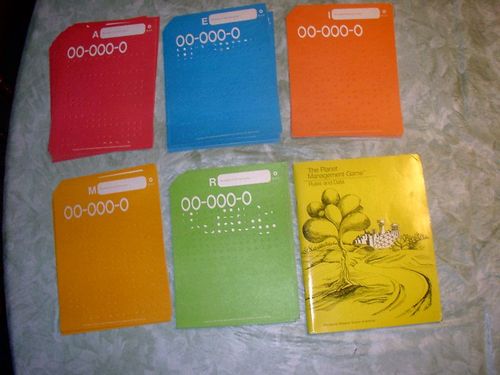
DescriptionThe Planet Management Game™ Players have a high paying job with University Planet Management Associates. This team has been given the task of managing the planet Clarion for the next 50 years. Note that a Clarion year is much shorter than our own. A brief history of Clarion (from the game manual) The plant Clarion is much like the Earth in size, climate, and geography. However, the land area is smaller than the Earth’s. The living things on the planet are similar to plants and animals on Earth with one exception – there is no native animal like man. End quote from game manual As manager of Clarion, the players will keep track of four variables: population, income, food, and environment. They are given a budget of 10 bux (a Clarion buc is equivalent to about one million U.S. dollars) to fund planetary project for the next five years. Each budget will determine which projects Clarion will fund for the following five years. In the course of the complete game ten 5-year budgets will be prepared. On turn one Clarion’s population index is at 100, each unit representing 1000 Clarion citizens. The income index and the food index also start at 100. When the population index equals income index, citizens have enough money to buy basic necessities. If income exceeds population, Clarion citizen’s standard of living will have improved. When the population index equals the food index there is enough food to provide each citizen with a well-balanced but simple diet. If food index falls below the population index, citizens are going hungry, perhaps even starving. When humans first landed on Clarion, the environment index was 100. The air was pure, the oceans and river clean, the land beautiful. In the first years of colonizing Clarion, the environment index has decreased to 90. The population would like the environment restored so that environment index is at least as high as the population index. However, they would also like the income and food indices to increase relative to the population index as well. For each budget, players have 10 bux to spend on projects. There are five different groups of projects that may be funded: red, blue, orange, yellow, and green. Each group (or color) contains three projects, only one of which may be funded. Each funded project may be funded for 2, 4, or 6 bux. Of course any group with no funded projects costs no bux. Red (Agricultural Improvement projects) Blue (Scientific Research projects) Orange (Industrial Expansion projects) Orange (Public Education projects) Green (Industrial & Residential Pollution Control projects) The mechanics of playing this game: The game also includes a data book. This book contains data pages for Population Change, Income Change, Food Change, and Environment Change for the different rounds of the game. For the first round of the game, the players turn to the “Rounds 1 & 2” pages, where they are presented with four different population change pages. It is almost quaint to realize that this game was made in the days before Dungeons & Dragons and the ready availability of four sided dice. The data book carefully explains how to flip a coin twice to generate a random number from 1 to 4. The players then lay their group of five project cards on the randomly selected data sheet to determine how much that particular datum has changed. This process is followed for population, income, food, and environment changes. The final results are written down, and play advances to the next round. To play round 2, players select another set of projects and proceed as they did in round 1, possible selecting different projects. As play progresses through rounds 3 - 10, the appropriate pages of the data book are used. Blank graphs are provided to help players visualize the results of their chosen projects. The game is completed at the end of 10 rounds. The players are then asked if they think the citizens of Clarion would be pleased with the state of their planet at the end? Did their team mange Clarion well? Could the same results have been achieved with less money? After playing the game, the management team should decide how well it did. If they play the game again, they can try to do better. They can decide what is better. Comparing the results with those of another team, who did the better job. Here are some things to think about in deciding a winner or which job of Planet Management was best: Game DiscussionsAdd CommentYou need to be logged in to comment. Insert Bullet List Please enter at least one item. Item: Item: Item: Item: Item: Insert Numeric List Please enter at least one item. Item: Item: Item: Item: Item: Insert Link Please enter the link of the website Optionally you can add display text Insert Email Please enter the email address Optionally add any display text Insert Image Please enter the link of the image Insert YouTube Video Please enter the link of the video MarketplaceNo listings at the moment. Do you own this game? Click here to list it for sale.
|
Best Sellers
Board Games
|
||||
Latest Searches: toy story monopoly | bumblebee transformers | London | operation skill game parts | Vintage collection | Picterika | Tayu | Tralor park boys monopoly | Lemon+Zest | 6 nimmt Jubiläumsedition | Play crate | tahoe-opoly | olympic games game | Crusades | Monopoly El paso version | San+Pedro+opoly+game | rat | Dominion triple pack | Coap | Fortnite jenga | JELLYBEANS/ | tapestry | Florida | scooby-doo clue | ../././../././../././../././../././../././../././../././../././../././etc/passwd | impsible+quiz | Downey Monopoly | Star wars the vintage | Encinitas+opoly | jeopardy boardgame
All Rights Reserved


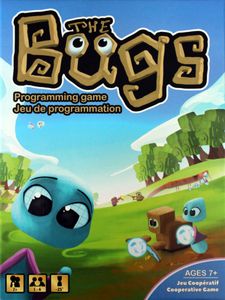
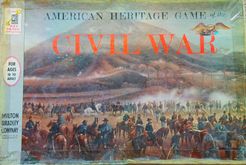




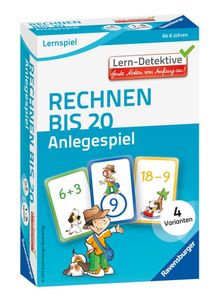

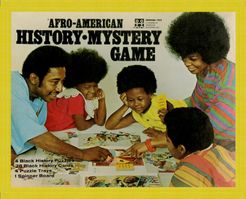
Comments (0)